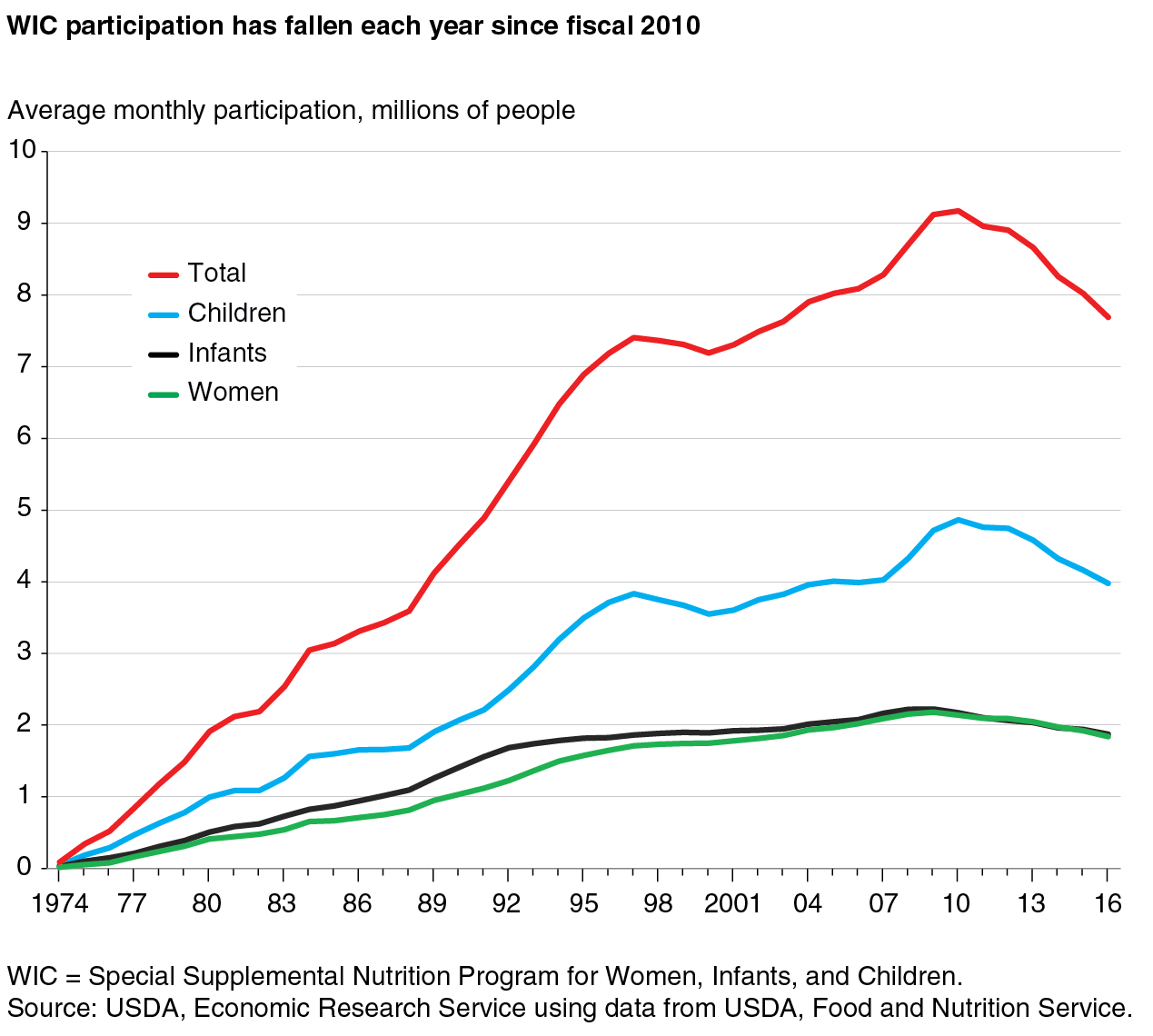WIC Participation Continues To Decline
- by Victor Oliveira
- 6/5/2017
USDA’s Special Supplemental Nutrition Program for Women, Infants, and Children (WIC) provides supplemental food, nutrition education, and health care referrals to low-income, nutritionally-at-risk, pregnant, breastfeeding, and postpartum women as well as infants and children up to age 5. In fiscal 2016, an average of 7.7 million people per month participated in the program, 4 percent fewer than the previous year. This was the fewest number of participants in 13 years. Since peaking in fiscal 2010, the number of participants has decreased by 16 percent.
With annual Federal expenditures of $5.9 billion in fiscal 2016, WIC is the Nation’s third-largest food and nutrition assistance program. WIC is based on the premise that early intervention during critical times of growth and development can help prevent future medical and developmental problems. On average, about half of all infants in the United States, over a quarter of all pregnant and postpartum women, and over a quarter of all children under age 5 participate in the program.
For the 6th consecutive year, participation for all three groups fell. The number of women and children receiving WIC assistance each fell by 4 percent in fiscal 2016, and the number of infants dropped by 3 percent. Improving economic conditions in recent years have likely played a role in the decline in participation. The number of people in poverty fell in 2015 (the latest data available), and in 2016, the unemployment rate declined for the 6th consecutive year to 4.9 percent. Since applicants must have incomes at or below 185 percent of the Federal poverty guidelines to be eligible or be determined income-eligible based on participation in certain other assistance programs, the number of people eligible for WIC is closely linked to the health of the U.S. economy. Falling WIC caseloads may also reflect the decline in the number of U.S. births. During 2008-15, the number of births fell in each year except in 2014. Holding other factors constant, fewer births reduce the potential pool of WIC-eligible participants.
This article is drawn from:
- Oliveira, V. (2017). The Food Assistance Landscape: FY 2016 Annual Report. U.S. Department of Agriculture, Economic Research Service. EIB-169.


